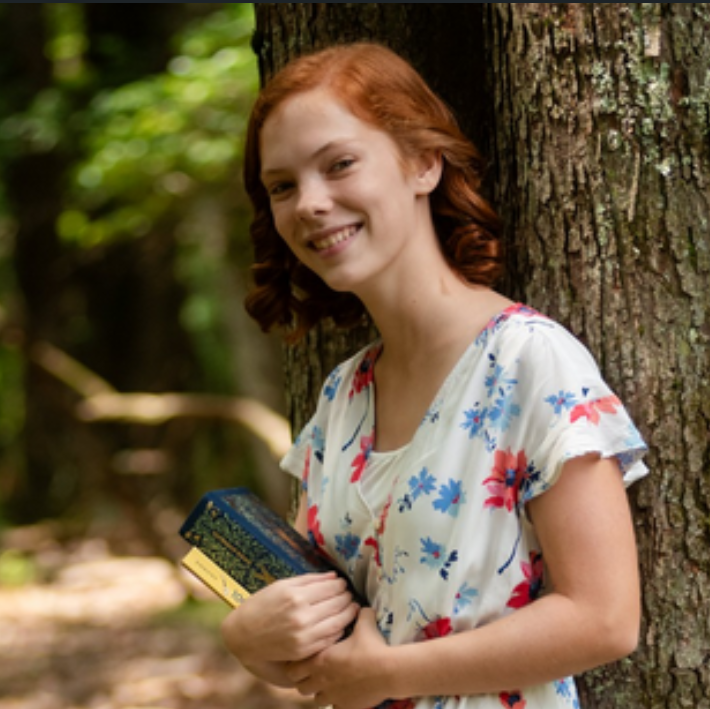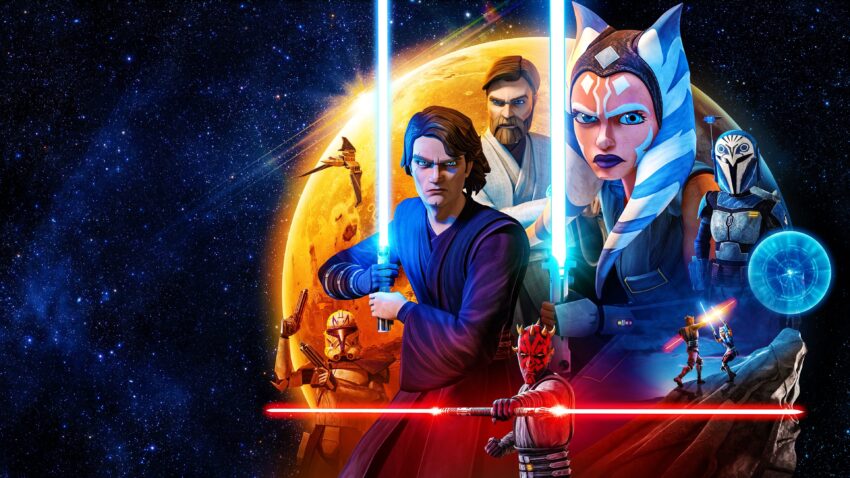We’ve already talked about the two types of scenes that have to happen for a relationship to become more than just a group of characters and begin to feel like a family. We explored bigger scenes, which involve the entire “family” and make up the spirit that defines their group. It’s these scenes that give the family a heart and energy that becomes unique and unforgettable. But just as important are the smaller, more intimate scenes between just two characters. It’s these scenes that bind together individual characters through personal, one-on-one interactions and make up the fabric of the group as a whole. Without these personal moments, the larger, group-centered scenes don’t seem earned.
But, how do you go about making sure both of these kinds of scenes are interesting and dynamic, not just repeating information readers got just as easily from the other? How can we make sure that each one offers something new and refreshing to the reader, opening a new angle or dimension to these relationships that wouldn’t be visible otherwise? After all, what’s the point of writing two completely different kinds of scenes when the information could be communicated just as easily with one?
To answer these questions, we have to come up with a blueprint for understanding the relationships of a cast of characters — both individually and as part of a whole group. And to do that, we’ll be exploring the found-family relationships developed in Dave Filoni’s Star Wars: The Clone Wars series.
Star Wars: The Clone Wars
The Clone Wars series is set before the original trilogy, when Anakin Skywalker hasn’t yet turned to the dark side to become Darth Vader and is still a Jedi fighting for the Galactic Republic alongside his mentor Obi-Wan Kenobi. Together, the two of them each lead a legion of clone troopers fighting an intergalactic civil war across planets and star systems. Both legions are led by a clone commander meant to serve as the Jedi’s right-hand-man, and their names are Captain Rex and Commander Cody.
Anakin and Obi-Wan grow to interact more and more like brothers throughout the series, especially as Anakin takes on more responsibilities and becomes more independent. He secretly breaks Jedi code to marry the young but influential Senator Padme Amidala, which no one knows except the two of them. He repeatedly leads Captain Rex and his clones on increasingly dangerous and occasionally illegal missions to save lives and advance the war effort. Despite Obi-Wan’s insistence that he learn responsibility and Captain Rex’s initial hesitance to risk his life every other week, Anakin shows no sign of letting up.
The Jedi council eventually decides he needs to learn to handle his responsibilities with, well, some responsibility, and so in an effort to tame his wild side, they assign him to train and mentor a force-sensitive 14-year-old named Ahsoka — who happens to share many of his worst character qualities. Her recklessness, arrogance, and endless quips drive him crazy, and at first he flat-out refuses to train her. But as the two of them learn and grow together, he starts to see her positive qualities, as well. She’s willing to risk her life for anyone, and still has a child-like compassion that hasn’t been calloused by war. He sees her potential for becoming not only an incredibly powerful Jedi, but also a remarkably selfless one.
So he agrees to train her.
What Made These Relationships So Deep
Considering The Clone Wars is a show with a twelve-year runtime and a total of seven seasons, it’s not surprising that there were moments when the plot dragged, the middle seemed to lose focus, or the plot didn’t seem to directly challenge the characters. But what it lacks in a neatly-trimmed plot, the show makes up for with deep and genuine relationships between the characters, developed over years of war and life-or-death situations. By the end, these characters — from the clone commanders to Padme — truly feel like a family.
And the reason for this is that the writers actually framed the character’s relationships like a family. They let each of the characters fill a family role, and the combination created a group that functioned, interacted, and understood themselves as a family. Within the group, Ashoka is undeniably the youngest child — doted on, mostly independent, and at times a bit entitled and arrogant. Padme is the responsible older sister, with a mountain of responsibilities that define her interactions — from precarious politics to navigate in the Senate, a forbidden marriage to keep secret, and an unbelievably reckless husband to try to protect. Obi-Wan is very much the oldest, and so is dutiful, unnecessarily controlling, but ultimately well-meaning and trying to keep the rest of them from dying.
But part of what makes these relationships so deep and multi-dimensional is that the writers didn’t confine the characters’ personality and relationships to family stereotypes. They weren’t put in a box, with every interaction, relationship, and comment tied to their “birth order” within their found family. Instead, the character’s relationships were multi-dimensional, meaning that based on who they were around and how they were interacting, the characters each took on different roles within the family.
When he’s with Ashoka, Anakin becomes the brooding and controlling older sibling, while Ahsoka becomes even more reckless and immature. When they are joined by Obi-Wan, he becomes the responsible oldest, scolding the other two regularly. Ahsoka then fills the role of the ill-advised but essentially harmless youngest, while Anakin becomes the dramatic and under-stimulated middle child. When Obi-Wan and Cody are together, the two seem like twin brothers — both are cautious, strictly loyal, but immensely effective military leaders, and eventually end up even mimicking each other’s idiosyncrasies and body language. While interacting with Rex, Anakin is an independent only child, and Rex is reminiscent of a cautious but overworked single parent without the bandwidth to control his reckless son. When Anakin is alone with Padme, the two are very much a married couple, both seeming more mature and with Padme often concerned for Ankain’s safety. When Padme is with Ahsoka, she becomes the fun, young aunt, and she isn’t afraid to admit she’s only a few years older than Ahsoka is.
But near the end of the series, Ahsoka repeatedly refers to Anakin as a father figure. Although most of their interactions were sibling-like, both of them grew and matured together, and in the moments when she needed guidance or counsel, Anakin was always there. At the end of an especially difficult mission, he was the first to ask if she was okay, to comfort her when she mourned, and try to remind her that she was still only a kid, and war shouldn’t change that too much. When she really, truly needed a father figure in her life, Anakin was there with compassion and wisdom that he typically masked. Despite how much she bothered him, Ahsoka also reminded Anakin very much of himself, and so he was able to reach her in a way most of the others couldn’t, and guide her through his own experience.
Anakin and Ahsoka’s relationship isn’t the only one that was mutli-dimensional. Across the show, each of the characters take on different roles and parts to play within the family. Although as a group each of the characters often understand themselves in terms of a particular role within the larger family, none of them are ultimately confined to a certain set of desires, dialog, or interactions based on their respective roles. And it’s that extra layer of depth that makes this family so realistic.
In reality, family relationships are often much deeper and more complicated than the basic roles they seem to fill from the outside. An older sibling will react differently in front of his parents than when it’s just him and his younger siblings. Younger siblings will often have a different relationship when they’re alone than when they’re with the middle child. It’s that level of depth that is lacking in many of the found families that don’t feel quite as close as they should be.
If we didn’t get scenes between Obi-Wan with Commander Cody, we would have no idea how he interacted outside of his role of trying to reign in Anakin and Ahsoka. If we only saw Padme with Anakin, we’d never see the young, more adventurous side of her that comes out when she’s with Ahsoka. If the clones never got to relate to each other, we wouldn’t have been able to see past their strict military sense of duty to their deep compassion and genuine love and loyalty to one another.
The extra dimension that the viewers get to see with every changing interaction and scenario is what makes relationships like the ones in The Clone Wars seem so genuine and well thought through. The writers intentionally let their characters fill familial roles with each other, but simultaneously didn’t let those roles confine and restrict them. It’s that level of depth and dimension that makes relationships like these so realistic. And that realism creates an undeniable authenticity that makes your characters’ relationships both memorable and compelling.



Let us know in the comments:
What character groups have you noticed taking on multiple family-like roles with each other? How did that help their relationships?


Hi! My name is Mara, and I’m a Christian artist, violinist, and blogger. I remember the day that I decided that I would learn something new about what makes a good story from every book I picked up — whether it was good, bad, or a mixture of both. I use this blog as a way of sharing some of the tips and tricks I’ve learned, and highlight which books, cartoons, and movies have taught me the most about writing an awesome story.


This is why I love writing Clone Wars fanfic, and why dialoge is my favorite part of stories. The banter and bickering in this series is just awesome. You can see exactly how much they mean to each other.
Yup! The dialogue on the show is incredible, and it’s definitely a big part of what makes their relationships so deep.
Ah yes, finally an article has been made about this legendary show.
Haha! I’m glad you appreciated it! It’s a little bit out of our general style for case studies, so I wasn’t sure how it’d be received (Except for Dena. I knew she’d love it.) Thanks for the encouragement!
Wow; this article is extremely helpful. (Well, most of your articles are, but this one is especially needed for where I am in my writing journey.) Thank you!
Awww, thanks! I’m so glad this has been helpful. Character relationships can be so much fun to write!